#Stuart Ember
Text

Stuart when he said, “I have a plan to get in with my cover intact. When you see me again pretend we’re just meeting,” and then Billy walked up to bang on the door of the room he’d been talking to a civilian in and went, “Hey Stuart! It’s me! Billy! Let’s go we have a lead.”
6 notes
·
View notes
Note
On the one hand yes they probably need a proper last name. On the other hand, referring to them as The Embers sounds really cool
I guess they’re the Ember System until they get Marina back. Because 1: thematically and metaphorically it goes hard. — 2: It’s Stuart’s system now/until she’s back. He’s the current Host, sadly for him, and that’s his last name.
0 notes
Photo

I, Frankenstein (2014)
#2010s#actor socratis otto#dir stuart beattie#dp ross emery#cat action#cat fantasy#cat sci fi#american#australian#gray#black eyes#demon#sfx makeup#vfx#ear#shadow#horns#no pupils#embers#collar#i frankenstein#i frankenstein 2014
0 notes
Text
new byler gate alert!!!!!
(miniongate master post)
tw: i’ve got super bad grammar pls ignore it
may i introduce to u..! MINIONGATE!!!!!! the theory that ive just invented that mike wheeler and will byers are actually the henchmen of the so loved gru from the despicable me franchise!!! why do i think this? well, well, well, let me tell u!
first of all, their colors.
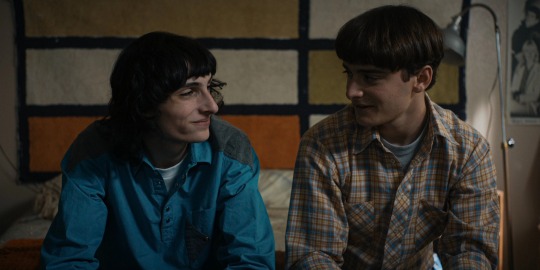

wowza!!! blue and yellow!!!! also for the fake minions fans, in minions the rise of gru our beloved kevin, bob and stuart fly to california (the west). blue and yellow meted in the west! whoopie!!!!!!!!!!
ok ok sooo second, minions r actually supa gay🤓gear me out!!!! there’s actually so many scenes where there are minions kissing or showing affection to each other (it’s very heart warming tbh) ei:
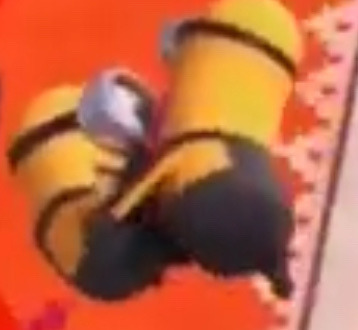



awwww🥺
anywho. third! so there’s this:

the minions r only stupid boys!!! mike and will believe it or not r boys also they’re stupid. visual aide⬇️⬇️⬇️
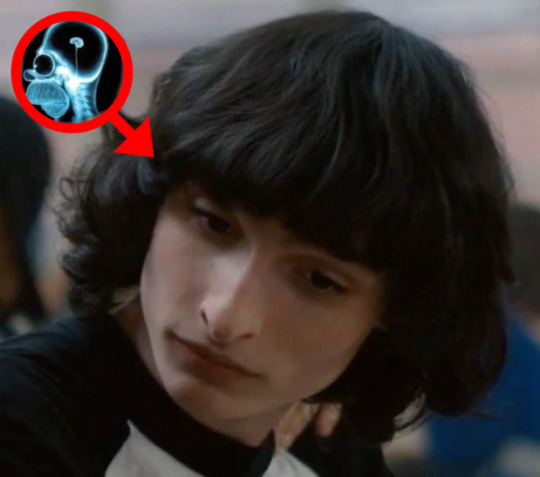
so, we’ve gone over why i think mike and will are minions. ‘now how does this relate to them smooching in the next season???’ u might be asking. well, i’m glad u asked!
alright, picture this. it’s the finale, right? everyone’s fighting whatever big bad there is, and will is being vecnaed (vecnaned? vecnaeded? vecneed???) or something. mike is by his side trying to break him out of the trance yk. vecna’s giving will all them horrible sad memories and wills like, “wa wah😭😭ily mike😭waaa i’m gay😢”. but then!!!! vecna shows will a memory that he doesn’t memeber, and will’s all confused. the memory is a minion with a bowlcut looking at a cute minion, and vecna does his scary voice over and he’s like, “mwaha😈😈😈hey bowlcut, do u ember this? heh”. and will’s like “who the flip re these minions???” vecna countinues his spooky voiceover “hah lmao stupid gay boy can’t even rember anything🤣ugh dumbo, this is when u lived with gru and michealminion😈” and then will stared remebeiing EVERYTHING!!! he membered when he was a minion and he kissed mikeminion🫢and when he helped steal the moon and doctor nefario died💔and all his other minion memories. AND THEN HE STARTED SHIMMERING😯😯😯and mike was like “erm what the sigma” so will did one of those magical girl transformations

this except it’s will byers turning into a minion. so now will is a minion, and mike is like “will why ru a minion🧐” and will catches him up on all the minion lore! and mike transforms into a minion as well. and theyre like woohoo we’re minions now, then they rember that vecans still being spooky. so they go in upside down using their minion powers. so they show up and r like “haha vecna henry 1 ur sooo ugly and stinky we dont like u😡” then mike and will use their epic gay minion powers and vecna dies🤩🤩🤩🤩🤩🥳🥳🥳🥳🤩🤩🥳🥳🤩yippee! and now vecna is dead for ever! so u know what that means😏then byler gyat freaky🙁but not supa freaky they just kissed bcuz theyre 14-15 and some ppl needa get a grip🤗🤗also chappell roan started playing🫢and everything thing was right in the world cuz byler is canon!!!!!
anyways!!! thanks for reading!!!!!! let me know any of ur thoughts, theories, opinions on miniongate!!!! peace out

(⬆️art by @cmnzoq )
#i think i smoked to much weed fam😅#miniongate#byler#chappell roan briefly mentioned#byler endgame#byler theory#byler tumblr#byler is real#byler brainrot#gay#mike wheeler is a boykisser#gay mike wheeler#why they so gay#minion#despicable me#churchgate#byler kiss#silly#byler canon#byler is endgame#miwi#poo poo pee pee#freaky#ah 👅#💛💙#byler analysis#byler s5#stranger things#st5 theory#st5 spoilers
159 notes
·
View notes
Text

Jacobi and McKellen as grand marshals of New York City's 2015 pride march.
All Good Omens (show) fans will know Derek Jacobi as the Metatron. His brief role on Doctor Who is also getting a lot of mention in recent posts, but I'm not going to talk about any of that.
Like his Vicious co-star Ian McKellen, Jacobi has had a long and illustrious career in theatre, television, and film. McKellen and Jacobi met when they were at Cambridge.

I'm not a huge fan of the Daily Mail, but this article, an interview with the two actors, is quite interesting. I'll just quote this part:
Jacobi says he came out to his mother when he was at university. ‘She said, “All young men, go through this phase, don’t worry.” I remember saying, “Don’t tell Dad.”’ He doesn’t know to this day if she did. ‘I think she did, but I don’t know. But they were wonderful, my parents, not much was said but they kind of knew, they got it.’
McKellen hasn’t heard his friend talk of this before. ‘That’s the first time I’ve heard that,’ he says, genuinely moved. ‘I never came out to my family. Biggest regret of my life.’ It turns out he didn’t even come out to Derek at university, even though it’s always been reported that he had something of a crush on him.
‘Yes, I did fancy Derek, but I didn’t act on it, God, no. It was illegal, remember. I do get on my high horse about it, because it was so difficult. There were no gay clubs you could go to. No gay bars, no gay newspaper, nothing. What there was was a bit sleazy, I suspect. One of the reasons I became an actor was that you could meet gay people. Even then everything was difficult. When you went to America they asked, “Are you now, or have you ever been, homosexual?” I lied on the form. It was a different world.’
I want to talk about Vicious for a bit, the ITV britcom in which Derek Jacobi and Ian McKellen play an aging gay couple, (respectively) a homemaker, Stuart Bixby, and an actor, Freddie Thornhill, for fourteen episodes.
Freddie (McKellen) tells Stuart (Jacobi) about a part he's hoping to get.

I had to add these for the Broadchurch reference.


It's a law that British actors of a certain age play this part.

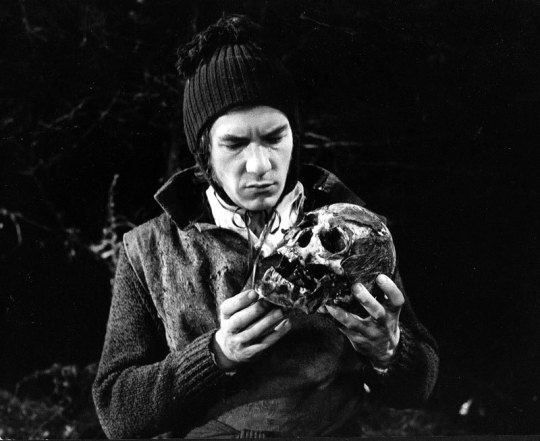

I couldn't find one with Michael Sheen and the skull, but here he is in the role.
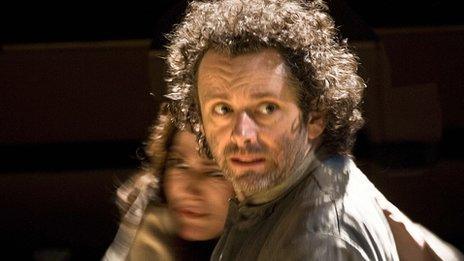
McKellen did the part again at 81 in an age-blind production.
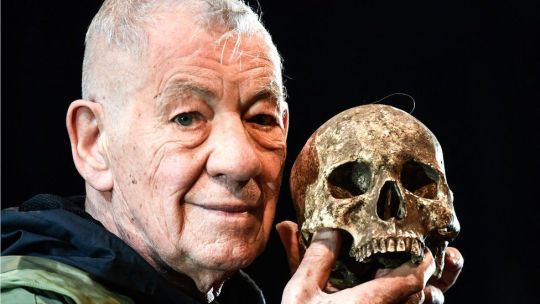
Jacobi's big breakout was the titular role in I, Claudius on the BBC in 1976.
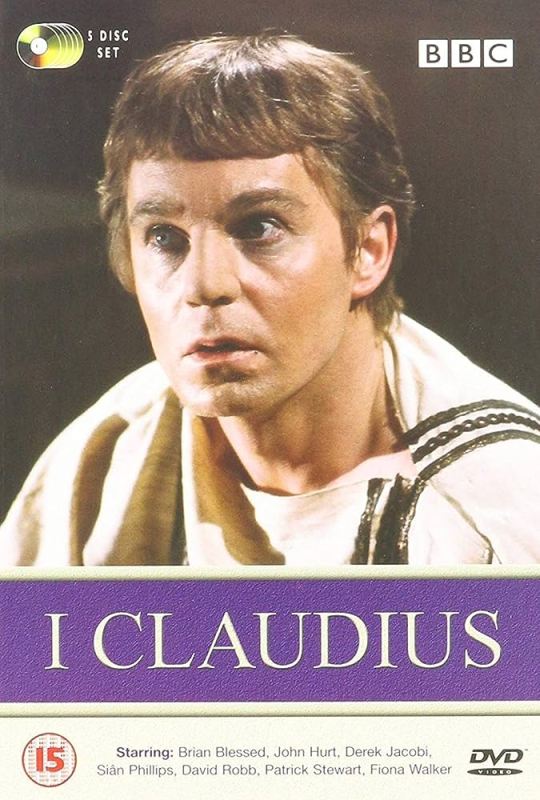
In the '90s, Jacobi played amateur sleuth and 12th century monk, Brother Cadfael on the ITV series.

I had watched some of Vicious before, but, spurred on by Jacobi's reappearance on Good Omens, looked for it again and watched both seasons a couple of weeks ago. Because I love a good fancast and Jacobi and Sheen (at least as Aziraphale) remind me a little of each other, I couldn't help but think that Jacobi and McKellen in their youth could have played a version of Aziraphale and Crowley. (There have been a couple of posts noting this about Jacobi, and that he might have been up for the part if it had been done soon after the book came out.)


Jacobi, left, and McKellen, right (obviously).
I also think that Tennant and Sheen could have pulled off playing Freddie and Stuart in a flashback.
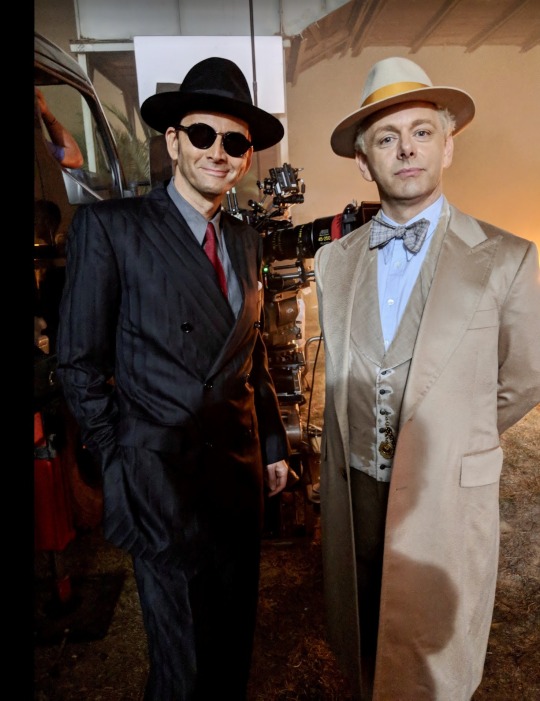

An even younger version of Freddie and Stuart does appear in the series, however, played by Luke Treadaway and Samuel Barnett.
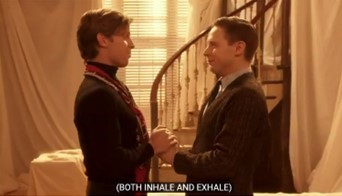
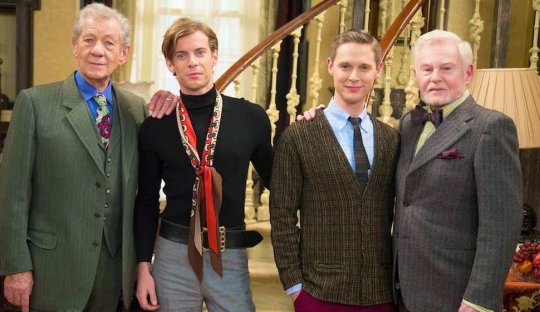
Also good casting! They do a great job playing McKellen and Jacobi playing Freddie and Stuart.
Shoutout to this post by @ember-knights, that suggested Good Omens fans should check out Vicious for a glimpse of what life in the South Downs cottage might be. And also to other posts mentioning Vicious and Good Omens in the same breath, as well as comparing Sheen and Tennant to Jacobi and McKellen (which I probably reblogged but can't find right now).
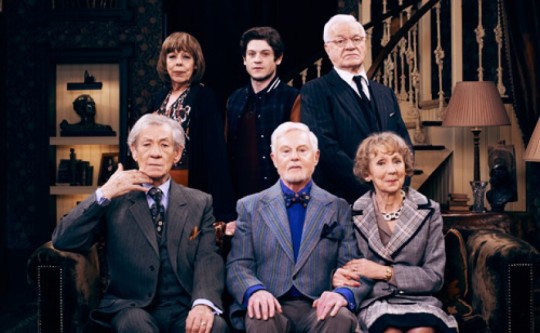
Cast of Vicious: Frances de la Tour, Iwan Rheon, Philip Voss, Ian McKellen, Derek Jacobi, Marcia Warren (Wikipedia). (Yes, the upstairs neighbor (Rheon) does go on to play Ramsay Bolton on Game of Thrones. He's a sweetheart in this, though.)
Now, I don't think Crowley and Aziraphale are the same as Freddie and Stuart, by any means. Freddie and Stuart say quite cruel things to each other. The characters become deeper in the second season; it’s a little sweeter than the first. I enjoy the bitterness of the first season too, though. It is funny, and Good Omens fans may enjoy watching it if only to see Derek Jacobi (who plays the Metatron) in a comedy role and a role that's sympathetic, especially if they are not familiar with his large and impressive body of work.
I don't think Aziraphale and Crowley's life in the bookshop as a couple, not just a group of two, or life on the South Downs, would be exactly like this, but there are somehow some similarities that I don't even know how to begin to pinpoint or explicate.
Crowley and Aziraphale’s affection is always so palpable and that’s not always clear with Freddie and Stuart. Crowley and Aziraphale are so loving that, even when they're bickering, it's joyful, even when they're arguing, even when they're coming apart (temporarily) at the seams, their love is undeniable. I don’t even think their breakup was toxic; although they were desperate at that point and hurt each other badly, it wasn't what they wanted. Sometimes it's that way.
And, lest I'm putting you off Vicious here, the Ineffable Husbands are a high bar as love stories go, but you will get to see some love and affection between Freddie and Stuart too, and I'd really love to see these actors work together more. (I am happy with how the show ends up, by the way.)
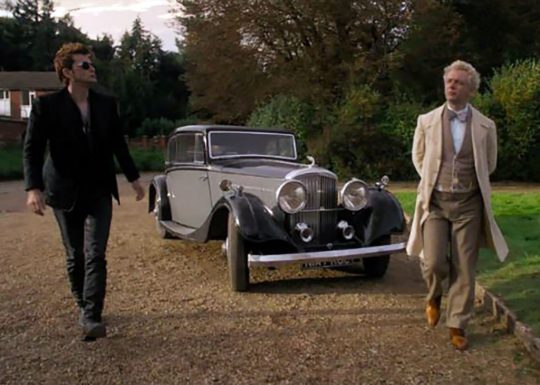

Toodle-loo! Hope everything is tickety-boo with you.
#Good Omens spoilers#Good Omens#Good Omens viewpoints#Derek Jacobi#Ian McKellen#Vicious#Derek Jacobi appreciation post#***Good Omens#tickety boo
501 notes
·
View notes
Text


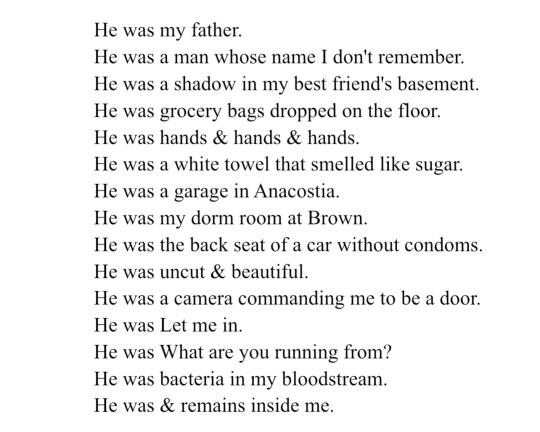

The Incest Diary | Stuart Henson, Ember Music; from 'The Heron' | Paul Tran, Boy Dreams of the Wolf | Bianca Stone, from What Is Otherwise Infinite: Poems; "Mary Magdalene"
102 notes
·
View notes
Text
Edmund Dulac's Fairy Tales go to War
Jstor Daily published an article with the catchy title "Edmund Dulac's Fairy Tales go to War". Of course I had to read it. The original article is here if you want to check it out, but I'll still copy-paste it below because it's crazy info. (And given it is quite long I will put two thirds of it under a cut)
Edmund Dulac’s Fairy Tales Go to War
One of the best-known illustrators of the “golden age of children’s gift books,” Dulac was also a subtle purveyor of Allied propaganda during the Great War.
By: S. N. Johnson-Roehr and Jonathan Aprea ; December 16, 2022
Once upon a time, there was a young artist named Edmund Dulac, who built his early reputation on his illustrations for J. M. Dent & Company’s 1905 edition of Jane Eyre. Almost instantly, he became a leading name in the book arts, producing illustrations for the Brontë sisters and popular magazines. Annual exhibitions of his drawings and paintings at the Leicester Galleries, London, drew the attention of both the European and American art world. In 1910, critic Evelyn Marie Stuart, writing for Chicago’s The Fine Arts Journal, described his work as “rich with poetry and imagination, and strong in the possession of that decorative element which renders a picture universally pleasing.” His drawings were like "things seen in a vision or a mirage; or traced by the fancy of a child in the lichens on the wall, the water discolorations upon a ceiling, or the light shining through a broken crumpled shade; or, even like the things we try to decipher in the leaping flames and glowing embers of an open fire��many of these delightful sketches suggest to our fancy in some detail a variety of objects."
Dulac’s themes tended toward the fantastical—scenes from the Arabian Nights and Omar Khayyam’s Rubáiyát—with roots in the Pre-Raphaelites and not far removed from the work of Arthur Rackham and Kay Nielsen.
Born in France and naturalized as a British citizen in 1912, Dulac understandably awarded his loyalties to the Allies during the Great War. To support the war effort, he contributed his art and design skills to several charity books, including Princess Mary’s Gift Book and King Albert’s Gift Book, both published in 1914. If there remained any doubts as to his feelings about the Axis powers, they were surely erased when he published Edmund Dulac’s Picture-Book for the French Red Cross in 1915, with its cover proclaiming “All profits on sale given to the Croix Rouge Française, Comité de Londres.”

Even more convincing—and more inventive—was his use of fairy tales to not just further his charitable efforts but to possibly encourage the United States to join the war. Published in 1916, Edmund Dulac’s Fairy-Book was a subtle but persuasive example of wartime propaganda. Subtitled “Fairy Tales of the Allied Nations,” it included Dulac’s own adaptations of folk tales gathered from the nations fighting with Great Britain: France, Russia, Italy, Belgium, Serbia, Japan, and China.
Below, courtesy of the Minneapolis College of Art and Design, are reproductions of some of the illustrations from Edmund Dulac’s Fairy-Book, accompanied by brief explanation of each story.

Snegorotchka: A Russian Fairy Tale
Snegorotchka (more commonly transliterated Snegurochka), the “The Snow Maiden,” is a recurring character in Russian folklore, playing various roles, from child to adult, in stories bounded by the winter and spring seasons. By the late nineteenth century, Snegurochka had blended fully with the traditions of Christmas, often serving as a helper to Grandfather Frost (Ded Moroz).
In Dulac’s version of a common tale, Snegurochka is a girl made from snow, brought to life to add joy to the waning years of a childless couple. An elderly man and women all but will the girl into being as they shape a tiny body of snow in the woods. Snegurochka leaps to life, filling their home and souls with warmth throughout the winter. Tragically, the little girl disappears with the heat of spring weather, leaving the parents bereft.
Another version of the Snegurochka tale formed the basis of a play by Alexander Ostrovsky, which was subsequently adapted into an opera by Rimsky-Korsakov.

The Buried Moon: An English Fairy Tale
Sometimes known as The Dead Moon, The Buried Moon highlights the dangers of living in the bog country of Northern Europe.
Traveling through a bog, a personified Moon becomes entangled in magical, malevolent branches. After some struggle with “all the vile things” that love darkness (witch-things, bogle-bodies, creeping things, and the Scorpion King, to name a few), the Moon finds herself buried deep in the mud, held down with a black stone.
Of course the humans miss the Moon, lamenting her failure to appear in the sky on schedule, but who even knows where to search for her? Even the Wise Woman of the Mill can’t see any trace of her. Fortunately, just before her entombment, the Moon had managed to briefly shine her light to guide a lost and wandering human out of the treacherous marsh. Remembering this moment, the man spreads the word. Emboldened by the Wise Woman’s words of encouragement as well as the Lord’s Prayer, the local people march to the bog, fight off the Horrors of the Darkness, and rescue their beloved Moon

White Caroline and Black Caroline: A Flemish Fairy Tale
Folklorist Antoon Jozef Witteryck collected White Caroline and Black Caroline (Wit Karlientje en Zwart Karlientje) and included it in his 1899 Old Flemish Folktales (Oude Westvlaamsche volksvertelsels), an annotated version of which was republished by Hervé Stalpaert in 1946. The story can also be found in the Annales de la Société d’Emulation pour l’Étude de l’Histoire & des Antiquities de la Flandre (Bruges, 1889).
White Caroline and Black Caroline depends on the familiar figure of the evil stepmother, a woman who loves her ugly daughter (Black Caroline) more than her beautiful stepdaughter (White Caroline). Everyone and everything, from townspeople to lambs to dancing dogs, love White Caroline and equate her beauty with good. But the mother prefers her own daughter, noting “Black Caroline was so ugly;—but she was good all the same!”
And indeed, Black Caroline is good. Her mother tries no fewer than three times to murder White Caroline, and each time, Black Caroline intercedes. Poison thorns in the pillow, poison in her meatball dinner, an “accidentally” falling millstone—none manage to kill White Caroline, thanks to Black Caroline’s quick thinking.
The abrupt entrance of White Woman, queen of all the water and the woods, brings the murder attempts to a close. Not surprisingly, White Woman also loves White Caroline and promises to give her whatever she wishes—beautiful grapes, a dress of silk, a nice sailboat. Luckily, White Caroline is also good: she wishes to have Black Caroline with her. More than that, she wishes they could look alike. The White Woman has an idea:
“Little white feathers appeared on their shoulders and spread until they were entirely covered; and there they stood together, two beautiful white swans! And ever after they swam up and down on the peaceful water and no one could tell one from the other.”
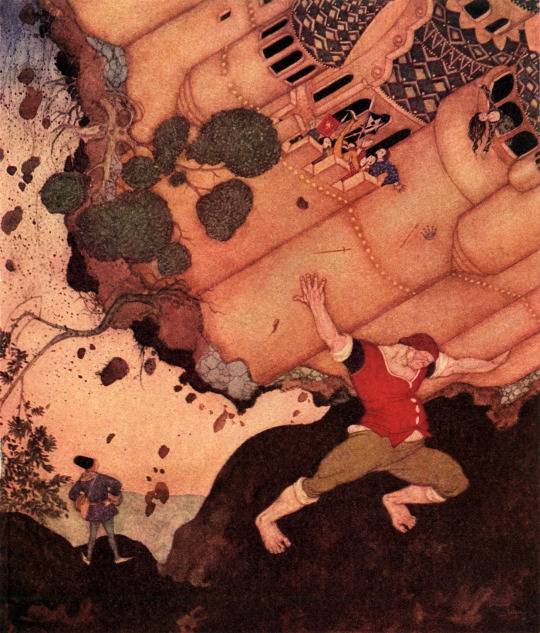
The Seven Conquerors of the Queen of the Mississippi: A Belgian Fairy Tale
While there may be an actual fairy tale underpinning The Seven Conquerors of the Queen of the Mississippi, the story’s title reveals Dulac’s probable agenda. It takes no large leap of the imagination to read the “seven conquerors” as Great Britain, France, Russia, Italy, Serbia, Japan, and China, all seeking an alliance with the Queen of the Mississippi—the United States—on the fields of Belgium.
The story is straightforward and structurally repetitive—each conqueror swears an oath of loyalty, and their individual strengths combine to win the Queen and kill the King (hello, Kaiser Wilhelm II).
Dulac, or some unnamed collaborator, has penned a verse that cuts through the first half of the tale with a modern rhythm and vocabulary.
“Will you travel with me, my pippy?”
“Oh! Whither away? To Botany Bay?”
“But no; to the far Mississippi,
Where a Queen—tooral-ooral-i-ay—
Is waiting for what I’m to say.”
“I am yours! And the bounty?”
“Either here or in Botany Bay!”
‘Will you travel with me, my pippy?”
“Oh! Whither away? To Rome or Pompeii?”
“But no; to the far Mississippi:
There’s a Queen of great beauty that way,
And there’s no one but Cupid to pay.”
“I am yours! And the bounty?”
“Name your price: it shall be as you say.”
And so on. Travel with me, my pippy!

The Serpent Prince: An Italian Fairy Tale
The Italian poet Giambattista Basile collected The Serpent Prince (sometimes translated as The Enchanted Snake) in the seventeenth century, including it in The Pentamerone: Lo cunto de li cunti (The Tale of Tales). Folklorist Andrew Lang drew upon Basile’s version for The Green Fairy Book (1892).
Dulac has created his own prefatory material for the familiar story, opening with the popular nursery rhyme:
The old woman who lived in a shoe,
Who had so many children she didn’t know what to do,
allegedly “lived about the same time in another part of the country” even though The Serpent Prince was collected in Naples.
As the story goes, a forester’s wife, Sapatella, finds a tiny serpent in her firewood. Childless, Sapatella is startled but amenable when the serpent offers himself up for adoption (“she was a kind-hearted woman and very, very lonely”).
The serpent grows—as children do—and soon demands a wife. And not just any wife! The serpent must marry the king’s daughter. Surprisingly, the king agrees to meet this demand. Or does he? He will give his daughter in marriage only if the adopted son-serpent can turn all the fruit in the royal orchards to gold.
It’s not clear why anyone is surprised that a talking serpent can wield the magic necessary to turn fruit into gold. Nor is it clear why the king would think the serpent would fail at any additional challenge placed before him. Turn the walls into diamonds and rubies? No problem. Turn the entire palace into gold? Absolutely (“not gold plate either: it was all solid gold of the purest kind.”). The king is forced to cede the battlefield. The princess will marry the serpent.
Of course, the serpent is really an enchanted prince, and here you would think the story would end: the affianced are wed, their kingdoms allied. But thanks to an additional foolish act by the king, the prince is again enchanted (and worse), and only the princess can save him. But will she be able to outwit the wily fox standing between her and her beloved?
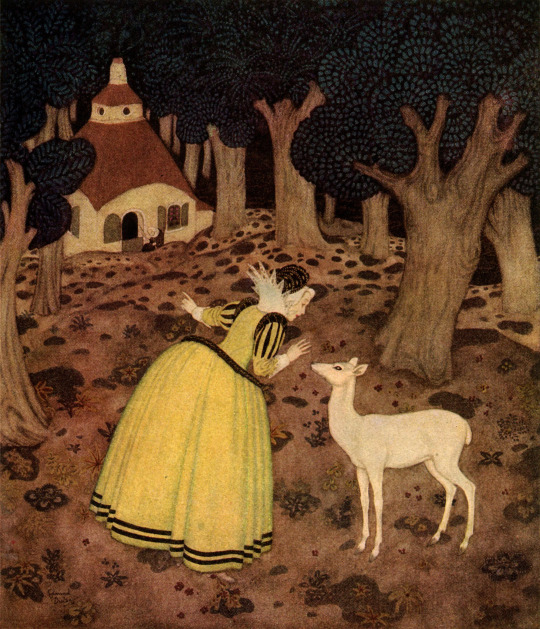
The Hind of The Wood: A French Fairy Tale
Dulac offers a faithful retelling of The Hind in the Wood (La Biche au bois, also translated as The White Doe or The Enchanted Hind), written by Marie-Catherine Le Jumel de Barneville, Countess d’Aulnoy. A talented and creative storyteller, Countess d’Aulnoy gave us the very words “fairy tale” in 1697, when she published her first collection under the title Les Contes des fees (Tales of the Fairies).
Though the titular hind is the star of the story, the scene opens with an unhappy, childless queen encountering a talking crayfish. Though “hearing a big Crayfish talk—and talk so nicely too—was a great surprise to her,” the queen listens carefully to the crustacean.
The reward for her attentiveness is a kingdom transformed. Beneath her feet appears “a carpet of violets, and, in the giant cedars above, thousands of little birds, each one a different colour, [singing] their songs; and the meaning of their melody was this: that cradle, woven by fairy fingers, was not there for nothing.” Soon she will be a mother!
A troupe of fairies gather around the suddenly expecting queen and ask that she welcome them on the day of birthing so they can give special gifts to the babe, who will be named Désirée. And on that special day, the queen indeed remembers to bid them come to the palace. Sadly, she neglects to invite the talking crayfish (who is really the Fairy of the Fountain) to the celebration.
Curses. But only small ones, in the scheme of things. The Fairy of the Fountain warns the royal parents to keep Princess Désirée from seeing daylight until she turns fifteen. That’s all.
Alas, the Warrior Prince lies on his death bed. Just a portrait of Désirée is enough to make him fall in love and abandon his plans to marry Black Princess. Yet he cannot see her—she will not be fifteen for a few more months. To save the Warrior Prince, Désirée agrees to travel with her two ladies-in-waiting by darkened carriage to his kingdom.
Unfortunately, one of those ladies-in-waiting, Long-Epine, is a traitor. She slits the cover of the carriage, exposing Désirée to daylight. Just a drop of sunlight turns the princess into a dazzling white hind. She instantly runs off into the forest. And that is the curse: by day, a doe; by night, a lonely princess.
The Warrior Prince wanders this very forest and soon spots the white deer. Annoyed that the animal tries to keeps its distance from him, he looses an arrow and pierces her flank. He’s sorry! Especially when he finds out the hind is his beloved, enchanted.
She isn’t enchanted for much longer, however. The Prince, even knowing all, loves her. And that is enough to break the spell
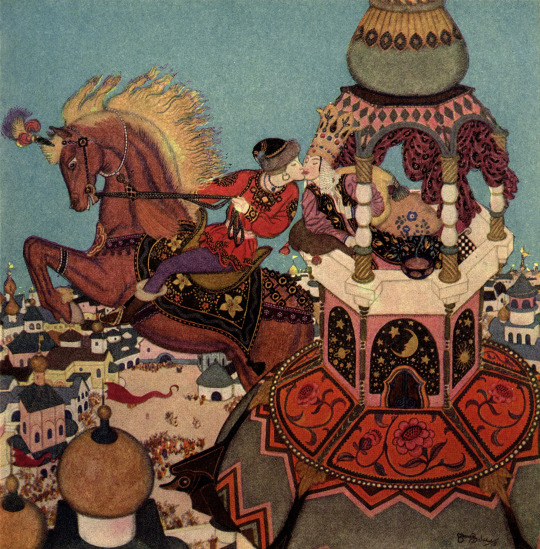
Ivan and the Chestnut Horse: A Russian Fairy Tale
Variations of Ivan and the Chestnut Horse are abundant in Russian folklore. Sometimes Ivan rides a chestnut horse, sometimes a dun. A common version of the story, known as Sivko-Burko, was collected by A. N. Afanas’ev in the mid-nineteenth century. Included in Jack V. Haney’s comprehensive The Complete Folktales of A. N. Afanas’ev (Tale #179, Vol. II), this version gives Ivan a magic black steed.
Ivan and his brothers have just committed themselves holding daily prayers over the grave of their recently departed father when they hear that Princess Helena the Fair has decided to wed. To win her favor, her suitor must leap on horseback to the top of the shrine on which she sits, kissing her as he flies through the air.
Ivan, the youngest of the siblings, offers to take on the burden of graveside prayer for a week so his brothers can curl their hair and train their horses for the challenge. One week stretches to two, and then to three. The brothers ignore their filial duties to dye their mustaches. So much attention is paid to their appearance that they even neglect to feed their horses.
And yet, when the day of the leaping contest arrives, the older brothers dash away on their mounts, leaving Ivan alone to pray and weep over his father’s grave.
It was thus that two out of three brothers miss their father’s resurrection. Shaking himself free of the damp earth, the father offers to help his youngest son. He begins to call out in a loud voice—one time, two times, three times. Ivan discovers his father is summoning a beautiful chestnut horse!
Yes, this is the enchanted steed that will take Ivan to the shrine of Helena the Fair, where—after two failed attempts—it rises to the leap, allowing Ivan to press his lips to those of the princess “in a long sweet kiss, for the chestnut horse seemed to linger in the air at the top of its leap while that kiss endured.”
After summoning the steed, Ivan’s father immediately vanishes. No matter, because Ivan is soon welcomed to supper with the father of his bride, Princess Helena the Fair.

The Blue Bird: A French Fairy Tale
The Blue Bird (l’Oiseau Bleu) is another tale that comes to us by Countess d’Aulnoy. Though there are many variants of the story found across Europe, scholar Jacques Barchilon notes that d’Aulnoy’s version is remarkably robust, appearing in a French Canadian collection, “word for word the version of Mme d’Aulnoy’s with all details,” as late as 1960. Andrew Lang also included it in The Green Fairy Tale Book.
Our story opens with a rich but miserable king. He’s inconsolable, having only recently become a widower. Hoping to comfort him, his courtiers present him with a woman dressed in mourning clothes and possibly crying even louder and longer than the king himself.
Finding solace in their similar sorrows, they decide to wed. Each brings into the marriage a daughter from their first marriage. The king’s daughter: “one of the eight wonders of the world,” the young and lovely Florine. The new queen’s daughter: “neither beautiful nor gracious,” the young Truitonne, with a face like a trout and hair “so full of grease that it was impossible to touch it.”
The queen loves Truitonne much more than she loves Florine, which wouldn’t matter if the king didn’t love the queen so much that he cedes to her every wish. For instance, he allows her to dress Truitonne in jewels and Florine in rags when Prince Charming appears at court. Despite the heavy-handed costuming, however, Prince Charming only has eyes—and love—for Florine.
The queen schemes. The queen plots. She enlists maid, frogs (“for mind you, frogs know all the routes of the universe”), and fairy godmothers. And yet the Prince will not be deflected from his plans to be with Florine. Finally, exasperated with his stubbornness, Truitonne’s fairy godmother turns the prince into a blue bird—for seven years!
It’s not too bad, at first. In bird form, the prince finds it easier to woo Florine—until the queen discovers that he flies to her window every night. Wielding her dark magic, Truitonne’s fairy godmother sends the blue bird to his nest to die.
Fortunately, every bad fairy seems to be balanced by a good fairy. This bright character finds the dying blue bird in his nest and heals him. It doesn’t seem to help much—the queen is determined that Truitonne will marry the prince even if only by trickery and deception.
The queen’s shenanigans never seem to end—this is a long fairy tale—but eventually the universe, or at the least the good fairy, finds a way to bring Prince Charming and Florine together.

The Friar and the Boy: An English Fairy Tale
The Friar and the Boy, also known as Jack and his Stepdame, reaches back to the poetry of medieval England. In volume three of Remains of the Early Popular Poetry of England (1866), William Carew Hazlitt records a c. 1585 London imprint of the chapbook verse that underpins the modern version of this tale.
The story begins with Jack, a young lad wronged by his stepmother. She starves him, she yells at him, she altogether doesn’t care for him.
One day, sent to the fields to watch the sheep, Jack encounters a hungry old man. Jack’s lunch isn’t much, as his stepmother is loathe to feed him decent food, but he gives it to the stranger. In return, the old man gives Jack three wishes.
Wish one: a bow and arrow, charmed such that the target will never be missed. Wish two: a pipe, its magic strong enough to make anyone dance who hears its tune. Wish three: an enchantment that will turn his stepmother’s harsh words into laughter.
Jack instantly puts his granted wishes to work. When his stepmother begins to scold him, her words turn to laughter. She laughs herself sick. When the Friar is sent to chastise Jack for his impudence, he ends up dancing through the brambles to Jack’s piping. Soon Jack has the entire village dancing to his tunes!
Alas, his poor old father begs for a rest. Jack loves his father, so he ceases to play. Not surprisingly, the Friar takes advantage of the pause to have Jack called before the Judge, “be-wigged and severe.”
The Friar makes his case: “the prisoner here has a pipe, and, when he plays upon it, all who hear must dance themselves to death, whether they like it or not.”
Intrigued, the Judge asks to hear this so-called Dance of Death. Jack is happy to oblige and takes up his pipe to play. Soon everyone in court is on their feet, dancing madly to the tunes. Even the judge joins in, “holding up his robes and footing it merrily.” He’s a believer, but he soon asks the boy to stop.
Jack agrees, but only if everyone promises to treat him properly.
“I think,” says the Judge, “if you will put your pipe away, they will consent to an amicable arrangement.”
Court is adjourned.
The End.
#edmund dulac#fairytale illustrations#fairytale art#french fairytales#british fairytales#english fairytales#edmund dulac's fairy book#world war I#wwI#fairytales and war#fairytale propaganda#russian fairytales#belgian fairytales#flemish fairytales#edmund dulac's fairy-book#italian fairytales#political fairytales
9 notes
·
View notes
Text










Robert Plant and Alison Krauss at Rose Music Center at the Heights, Huber Heights, Ohio, May 3, 2023
Emerging from opposite sides of the stage without introduction, Robert Plant and Alison Krauss clasped hands when they met in the middle and launched into “Rich Woman.”
It was the first of 17 selections from 2007’s Raising Sand and 2021’s Raise the Roof - plus a few smartly reimagined Led Zeppelin numbers - the pair played May 3 in opening the summer concert season at Rose Music Center at the Heights in Huber Heights, Ohio. But the first night of proverbial summer was “really fucking cold,” as Plant, in layers with hand warmers in his pockets, put it while Krauss stood beside him with her hands pulled into the sleeves of her heavy winter coat.
“Welcome to Norway,” the maracas-playing Plant said to the sold-out house that remained standing throughout the 90-minute, low-ember-glow of a performance.
Stoking the warm aural flame were drummer Jay Bellerose, who employed mallets, sticks, shakers and tambourine on his kit; double bassist Dennis Crouch; multi-instrumentalists Viktor Krauss (Alison’s brother) on guitar and piano and Stuart Duncan on guitar, mandolin and violin; and guitarist JD McPherson. The latter pulled double duty, opening the gig with a self-described “quick, efficient, (3)0-minute rock ‘n’ roll set” that mixed originals and such covers as Iggy Pop’s “Lust for Life” into a blend of 1950s rockabilly with sax and 1970s, guitar-based rock.
Plant and Krauss went back further, setting songs like “Fortune Teller,” “Please Read the Letter” and “Gone Gone Gone” in hazy, swirling arrangements that evoked misty sounds of bygone eras that wafted through vintage amps. The stage, with lighting and beige and white curtains to give the outdoor shed the ambiance of an indoor theater, bolstered the aural illusion.
Long reluctant to revisit his past, Plant transformed “Rock and Roll” into a country rocker built upon Duncan’s violin. He and Krauss would play twin lines on a dark, moody version of “When the Levee Breaks.” Its bright, sonic anthesis, the slowed-by-half “The Battle of Evermore,” sparkled on Duncan’s mandolin as Krauss subbed in for Sandy Denny on vocals.
Singing gently and passionately, Plant and Krauss wavered out of perfect key only occasionally, the former likely owing to his 74 years and the latter - who ceded all banter to her partner - fighting against the cold air and adjusting her earpiece.
Slightly less than flawless is nevertheless a Herculean achievement - particularly given the unseasonable temperatures and the newness of this leg of the Raising the Roof tour.
Grade card: Robert Plant and Alison Krauss at Rose Music Center at the Heights - 5/3/23 - A
5/4/23
#robert plant and alison krauss#robert plant#led zeppelin#alison krauss#alison krauss and union station#iggy pop#the everly brothers#2023 concerts#jay bellerose#stuart duncan#jd mcpherson#dennis crouch#viktor krauss#sandy denny#fairport convention
16 notes
·
View notes
Text
closed starter for @hcrexcellency { joanna. }

It was almost a pity how easy it was to get from Reuben where Joanna was, or to get him to agree to make himself disappear for a time. Maybe it should have earned him a bonus point or two, so quick to respect the authority of the King (and really, it should be commendable, for it was Ruby, after all, but his efforts were all but unnoticed by Graeme.) instead, Graeme regarded the new Prince with as little opinion as ever, not even offering a thank you or good night as he scurried off to his youngest. His heart was in a state of unrest, and be damned them all, maybe all this dramatic behavior about love was wearing off on him. Acceptance is never wielded easily by a Stuart, each born with belief they could change the hands of time with sheer will alone. Each one of them now were facing their mountains, unmovable in their ironclad absolute. His, a fading vision; but Graeme could not let himself lose sight of the valuable matters in life.
Joanna, in all her rebellion && disobedience, was as valuable as any amount of power. Of course he would remember this, and when better but a moment of disheartened, somber refection? " Joanna? " Graeme greeted, opening the wide door to the near-empty common room for the Stuart's, all but a small sitting room, the slight of the Bourbon's to give them a cramped wing of the castle. He was a strong silhouette, hesitating there in the door, silence extending even as it shut behind him. " I did not come here to argue any further. Not tonight. " He clarified, entering the room fully now, and crossing it to sit beside her in front of the fire. Though summer had arrived, the nights were cool, and with the windows open, the skin could grow cold without the orange heat from dying embers. " ...are you alright, my child? "

5 notes
·
View notes
Text
Dear @weirdowithaquill , after our previous discussion it gave me a lot of food for thought! So, I owe this one to you :)
For those who are wondering, this is part of the same AU I set up previously, just considerably later on than the events of my first post. Enjoy!
It was a hot, stuffy night in July, when the air was heavy with humidity that floated about the place like a film of thick, sticky spider webs that hung everywhere and ensnared whoever they touched. It had made everyone feel very hot and bothered, making it a hard day of work for the little engines on the Skarloey Railway.
Duke woke from a fitful sleep that night; one of many that were plagued with visions of familiar faces: Stuart, Falcon, His Grace, and even Stanley, all of whom stared right into his core with expressions of sympathy or concern, or burning hatred, depending on who appeared before him. Their faces and voices would then swirl and blur into a bizarre cacophony of sights and sounds that only grew louder and brighter until Duke awoke with a gasp, finding himself in front of an open shed door, Peter Sam and Sir Handel sitting closely on either side of him, sound asleep. Duke sighed.
These heavy summer nights often did that to him. The atmosphere felt too much like his old, buried shed on the Mid-Sodor.
He firmly reminded himself that he was NOT back in his old shed and attempted to go back to sleep, when he was interrupted by a strange noise. A soft humming, followed by incoherent muttering. It was coming from a short distance away, down the stretch of track he was on.
Duke squinted into the darkness, trying to locate the source of the noise. The new moon was enshrouded by black clouds, so it was nearly impossible for Duke to see beyond his own buffers, let alone into the yard.
Duke realised his fire was still warm, the embers from earlier still flickering. Carefully, as not to wake Peter Sam and Sir Handel, he gave himself a jolt that knocked some coal across his footplate and into the firebox. Steam began to build as his fire started to burn back to life. Time passed, and Duke felt steam rushing into his cylinders. He gently eased open his regulator and crept out.
As he rolled along, the muttering grew louder, clearer. It was barely intelligible, coming out in a whisper at a feverishly rapid pace, but Duke found that he was starting to make out a single phrase, repeated again and again:
"It's all in my head, get out of my head. It's all in my head, get out of my head."
It was like a twisted version of the coaches singing as they swayed happily behind their engine in the day. It made Duke feel very uneasy.
When it sounded like whoever-it-was was right in front of him, Duke forced his regulator shut and stopped to listen. The voice, though still whispering huskily, sounded somewhat mellow and unbroken, not quite a child's voice, but not an adult's, either. How they hadn't noticed Duke puffing up to them, he didn't know, but at that moment the lamp on his bufferbeam flickered to life, and the whispering abruptly stopped.
Duke found himself face-to-face with a young girl, crouched on the tracks in front of him. Her eyes, one green, the other black, were wide as dinner plates, and were staring at him.
#ttte au#ttte duke#original character#oooooh cliffhangers#sorry not sorry#potential angst#yay?#this was fun
6 notes
·
View notes
Text
GOD IS AN ASTRONAUT Release Epic New Video Single 'Odyssey' from Upcoming Studio Album
[photo: Stuart Wood]
In support of their upcoming, critically acclaimed studio album Embers, due out this Friday on Napalm Records, progressive psych-and krautrock trio GOD IS AN ASTRONAUT presents us with their brand new video single “Odyssey”!
The track provides an exhilarating ride blending all facets of the band’s incredible songwriting skills. GOD IS AN ASTRONAUT reveal:
“Odyssey is the…
0 notes
Text
Friday Pilots Club just makes such system music, is the thing
#making a playlist for a MOTW player character who’s a system and like half of it is just different FPC numbers. as if it’s my fault#Ember System#I need to pick a last name for them bc they shouldn’t be called by Stuart’s fake last name probably 😅#enjoying this MOTW pc a lot#I think now that he’s got Joan back it will be fun to play them off each other too. so much fun dynamics to explore there
1 note
·
View note
Text
Excerpt from Shuggie Bain, by Douglas Stuart
Agnes Bain pushed her toes into the carpet and leaned out as far as she could into the night air. The damp wind kissed her flushed neck and pushed down inside her dress. It felt like a stranger’s hand, a sign of living, a reminder of life. With a flick she watched her cigarette dout fall, the glowing embers dancing sixteen floors down on to the dark forecourt. She wanted to show the city this claret velvet dress. She wanted to feel a little envy from strangers, to dance with men who held her proud and close. Mostly she wanted to take a good drink, to live a little.
With a stretch of her calves, she leaned her hipbone on the window frame and let go of the ballast of her toes. Her body tipped down towards the amber city lights, and her cheeks flushed with blood. She reached her arms out to the lights, and for a brief moment she was flying.
No one noticed the flying woman.
She thought about tilting further then, dared herself to do it. How easy it would be to kid herself that she was flying, until it became only falling and she broke herself on the concrete below. The high-rise flat she still shared with her mother and father pressed in against her. Everything in the room behind her felt so small, so low-ceilinged and stifling, payday to Mass day, a life bought on tick, with nothing that ever felt owned outright.
To be thirty-nine and have her husband and her three children, two of them nearly grown, all crammed together in her mammy’s flat, gave her a feeling of failure. Him, her man, who when he shared her bed now seemed to lie on the very edge, made her feel angry with the littered promises of better things. Agnes wanted to put her foot through it all, or to scrape it back like it was spoilt wallpaper. To get her nail under it and rip it all away.
#shuggie bain#douglas stuart#80s#scotland#addiction#family trauma#literary fiction#books#reading#writing
1 note
·
View note
Text
Vegreth, Tweek, Clyde, Dylan, Jace, Butters, Gregory, Firkle, Pete, David, Mercedes, Lycidas, AJ, Fisher, Bloodrayne, Larry, Stuart, Zeke, Ozzy, Prim, Torm, Zen, Ris, Ares, Dray, Les, Kevin, Kyle, Lizzy, Nathan, Wendyl, Aster, Ringer/Dalvoreth, Brandy, Ember, Etha, Mona, Royce, and Val are awake if anyone wants to send some memes or something!
I'm gonna try and be more active here, at least today. Please feel free to hit me up! Send some memes or interact with this post somehow and I'll send someone to your inbox!
0 notes
Text
Öt éjjel Freddy Pizzázójában
Országos bemutató: 2023. november 2.
Túl tudsz élni öt éjszakát?
A félelmetes horrorjáték-jelenségből vérfagyasztó moziesemény lesz, mert a Blumhouse – a M3GAN, a Fekete telefon és a Láthatatlan ember mögött álló stúdió – felvarázsolja a FIVE NIGHTS AT FREDDY’S filmet a vászonra.
A film egy zaklatott éjjeliőrt követ, aki dolgozni kezd a Freddy Fazbear’s Pizzánál. Miközben az első éjszakáját tölti az új munkahelyén, ráébred, hogy az éjszakai műszakot Freddy’snél nem lesz olyan könnyű túlélni.
A szereplők Josh Hutcherson (Ultraman, az Éhezők viadala-sorozat), Elizabeth Lail (Te, Hirtelen 70), Piper Rubio (Holly & Ivy, Instabil), Kat Conner Sterling (Szellem van a házunkban, 9-1-1), valamint Mary Stuart Masterson (Rejtjelek, Sült zöld paradicsom) és Matthew Lillard (Cseles csajok, Sikoly). A FIVE NIGHTS AT FREDDY’S rendezője Emma Tammi (A szél, Blood Moon), az írói Scott Cawthon, Emma Tammi és Seth Cuddeback. A film ikonikus báb karaktereit a Jim Henson’s Creature Shop készíti.
0 notes
